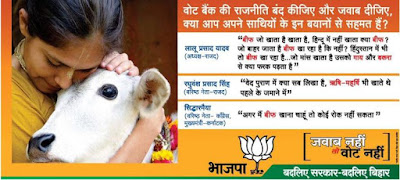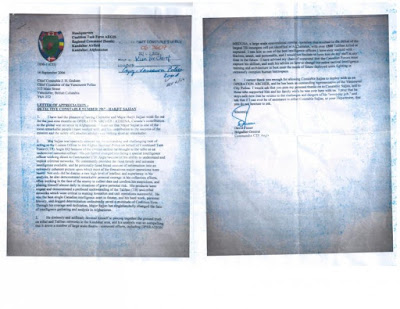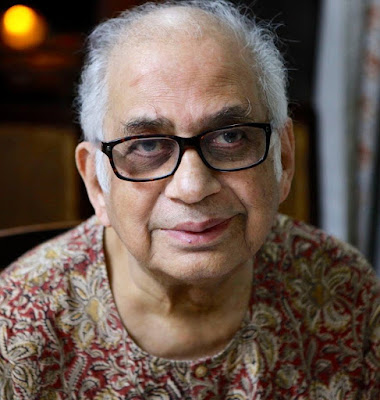It is easy for me to be labelled as a patriot. Do I love my country? Perhaps. Do I feel strongly about the achievements of my nation and fellow countrypersons?
Written by Sandeep Dikshit | Updated: November 11, 2015 8:12 am
Are “patriot” and “nationalist” synonyms? No. They connote different characteristics. A patriot, deshbhakt or watanparast is someone who loves her country, vigorously supports it and its way of life, loves and fights for it. A nationalist or rashtravaadi is someone with loyalty and devotion above all to a nation. Her sense of national consciousness exalts one nation over all others and places primary emphasis on its culture and interests — the “national way of life” — as opposed to those of other nations or supranational groups.
It is easy for me to be labelled as a patriot. Do I love my country? Perhaps. Do I feel strongly about the achievements of my nation and fellow countrypersons?
Yes, I do. Would I, if needed, pick up arms to defend my country? Yes. How would I describe a patriot? Simply as someone who will not compromise the national, security and economic interests of her country, and will contribute to its good, and to the good of others. I do not accept the notion that there are competing levels of patriotism. All decent and caring human beings defend and protect the honour and dignity of their people in their own way.
Nationalism, however, has connotations I find problematic. Do I have a particular consciousness as an Indian? Do I have a particular culture that defines me as an Indian? Yes, there is something distinctive about being Indian — family values, customs and mores, responsibilities, ownership over and liking of our music, architecture, dance, paintings and cultural expressions, peculiar phrases and expressions drawn from languages and religions of the region. But does that make me a nationalist?
I consider myself patriotic — not the flag-waving kind but certainly the flag-respecting kind. But in what way am I an Indian? In its simplest, most powerful form, as a citizen who believes in the one book that recognises me for what I am or will be and that defines my spaces, freedoms, just beliefs and rights — the Constitution. I have many fellow travellers, with varying degrees of belief in this book. But there is a finality that one will have to adhere to its basic principles, rights and duties.
However, I find myself at odds with many definitions of a nationalist. When the issues of other books, norms and cultural patterns are brought in, when religion takes a fuller role, I turn away. People who theorise on such forms of nationalism and exclusive identities are from different regions, religions and speak different languages. I have a serious problem with the notion that Hindutva is the defining and legitimising feature of being Indian.
I accept with glee and joy and preserve with passion what is mine — my Hindi, my mythology, my favourite characters, my nation and its plurality, my music and my dances, my colours and my clothes, my prejudices and my dislikes, and my opportunities to grow and mature. I will live the way I am, take joy and happiness in all the other wonderful ways in which people live, celebrate and express — but reject and oppose any imposition or condescension towards myself or others.
As a patriot, defending the security and integrity of my country and the life and property of all human beings, within and without its borders, is as critical as opposing calls and demands for recognition of different nationalisms. A religion’s beliefs, codified or not, need to be respected and given space. But when they are used to subvert the universality of human values of life, liberty and equality, for separating humanity, for codifying ways of life in
singularities rather than celebrating diversity and pluralism, then, to me, it is a war against humanity.
I reject vehemently these definitions as they impinge on me, subjugate me, blackmail me. I reject all totalitarian definitions. I will join in paying salutations to “Bharat Mata” — but as a symbol of the country, not as the divine mother.
Just as many Muslims say that loyalty to the country of birth is sanctioned in the Quran, I shall join in any celebration of the religion. But I reject religiosity as the main basis for caring for my country and its diverse people.
I reject being a nationalist. Nationalism is slyly inserted under many names and with many legitimacies — by invoking god, quoting scriptures, those shibboleths of mortal words, sometimes intelligent, often banal, usually understood and quoted with convenience and kept away from questioning in the name of faith. Equally, I reject the opposing of one form of nationalism with another. Both this definition and its opposition are carried on the wings of inscrutable divinity and religious sanction.
I am a patriot, I am not a jingoist nationalist, and shall never be one.
The writer, a member of the Congress party, is a former Lok Sabha MP
Written by Sandeep Dikshit | Updated: November 11, 2015 8:12 am
Are “patriot” and “nationalist” synonyms? No. They connote different characteristics. A patriot, deshbhakt or watanparast is someone who loves her country, vigorously supports it and its way of life, loves and fights for it. A nationalist or rashtravaadi is someone with loyalty and devotion above all to a nation. Her sense of national consciousness exalts one nation over all others and places primary emphasis on its culture and interests — the “national way of life” — as opposed to those of other nations or supranational groups.
It is easy for me to be labelled as a patriot. Do I love my country? Perhaps. Do I feel strongly about the achievements of my nation and fellow countrypersons?
Yes, I do. Would I, if needed, pick up arms to defend my country? Yes. How would I describe a patriot? Simply as someone who will not compromise the national, security and economic interests of her country, and will contribute to its good, and to the good of others. I do not accept the notion that there are competing levels of patriotism. All decent and caring human beings defend and protect the honour and dignity of their people in their own way.
Nationalism, however, has connotations I find problematic. Do I have a particular consciousness as an Indian? Do I have a particular culture that defines me as an Indian? Yes, there is something distinctive about being Indian — family values, customs and mores, responsibilities, ownership over and liking of our music, architecture, dance, paintings and cultural expressions, peculiar phrases and expressions drawn from languages and religions of the region. But does that make me a nationalist?
I consider myself patriotic — not the flag-waving kind but certainly the flag-respecting kind. But in what way am I an Indian? In its simplest, most powerful form, as a citizen who believes in the one book that recognises me for what I am or will be and that defines my spaces, freedoms, just beliefs and rights — the Constitution. I have many fellow travellers, with varying degrees of belief in this book. But there is a finality that one will have to adhere to its basic principles, rights and duties.
However, I find myself at odds with many definitions of a nationalist. When the issues of other books, norms and cultural patterns are brought in, when religion takes a fuller role, I turn away. People who theorise on such forms of nationalism and exclusive identities are from different regions, religions and speak different languages. I have a serious problem with the notion that Hindutva is the defining and legitimising feature of being Indian.
I accept with glee and joy and preserve with passion what is mine — my Hindi, my mythology, my favourite characters, my nation and its plurality, my music and my dances, my colours and my clothes, my prejudices and my dislikes, and my opportunities to grow and mature. I will live the way I am, take joy and happiness in all the other wonderful ways in which people live, celebrate and express — but reject and oppose any imposition or condescension towards myself or others.
As a patriot, defending the security and integrity of my country and the life and property of all human beings, within and without its borders, is as critical as opposing calls and demands for recognition of different nationalisms. A religion’s beliefs, codified or not, need to be respected and given space. But when they are used to subvert the universality of human values of life, liberty and equality, for separating humanity, for codifying ways of life in
singularities rather than celebrating diversity and pluralism, then, to me, it is a war against humanity.
I reject vehemently these definitions as they impinge on me, subjugate me, blackmail me. I reject all totalitarian definitions. I will join in paying salutations to “Bharat Mata” — but as a symbol of the country, not as the divine mother.
Just as many Muslims say that loyalty to the country of birth is sanctioned in the Quran, I shall join in any celebration of the religion. But I reject religiosity as the main basis for caring for my country and its diverse people.
I reject being a nationalist. Nationalism is slyly inserted under many names and with many legitimacies — by invoking god, quoting scriptures, those shibboleths of mortal words, sometimes intelligent, often banal, usually understood and quoted with convenience and kept away from questioning in the name of faith. Equally, I reject the opposing of one form of nationalism with another. Both this definition and its opposition are carried on the wings of inscrutable divinity and religious sanction.
I am a patriot, I am not a jingoist nationalist, and shall never be one.
The writer, a member of the Congress party, is a former Lok Sabha MP
Source: indianexpress





















